GW 4869
Chemically, GW 4869 is a small and novel molecule highly specific in its inhibitory action. Its molecular structure is diagrammatically depicted in Figure 1. It is cationic and also hydrophobic in its behavior. GW 4869 inhibits sphingomyelinases (SMase), more specifically neutral sphingomyelinase 2 (N-SMase 2), also termed sphingomyelin phosphodiesterase 3 (SMPD3) (Vuckovic et al., 2017) in a non-competitive and Magnesium ion dependent manner under both conditions, i.e., in vitro and in vivo, with the half-maximal inhibitory concentration (IC 50) of 1 micro-Molar (. This inhibition is tissue dependent as GW 4869 does not inhibit neutral sphingomyelinase 2 (N-SMase 2) in the Multiple myeloma (MM) cells (Vuckovic et al., 2017). SMase is a hydrolase thus, when active it catalyzes the hydrolysis of Sphingomyelin that results in the production of phosphorylcholine and lipid ceramide, that is bioactive in nature. As this hydrolysis occurs optimally at the pH value 7, thus these SMases are termed as neutral sphingomyelinase (N-SMase) (Canals et al., 2011). By this Sphingomyelin hydrolysis, the levels of ceramides increase in the cell. This increased level of ceramide a the most common feature demonstrated by the apoptotic cells, irrespective of the apoptotic signal which can be a chemical or an electromagnetic radiation. Ceramide triggers the most prominent features of apoptosis in the cell, i.e., blebbing of the plasma membrane, fragmentation of nuclear membrane and dysfunction of mitochondria. SMase is rendered activated via Tumor Necrosis Factor (TNF), whereas this TNF-induced SMase activation is effectively nullified by GW 4869 treatment and thus the apoptosis is inhibited (Luberto et al., 2002). This inhibition of apoptosis is demonstrated by a research study conducted on the breast carcinoma, i.e., epithelial tissue and glioma, i.e., nervous tissues of brain/ spinal cord. In another research study, old endothelial cells showed a high level of nSMase2 activity and this leads to a resultant higher ceramide level, which was effectively inhibited by treating with GW 4869 (Canals et al., 2011).
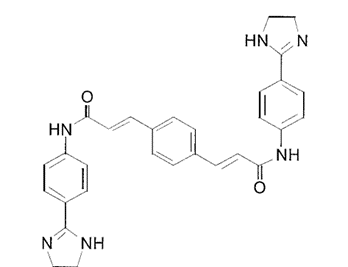
Figure 1 The Molecular Structure of GW 4869 (Luberto et al., 2002)

The decrease in the produced ceramide in the cells treated with GW 4869, is evident from Figure 2. And, in Figure 3 it is evident that those GW 4869 treated cells survived as SMase mediated apoptosis is prevented.
Figure 2 The level of Ceramide in the TNF treated cells and TNF&GW 4869 treated cells along with an appropriate control design. It can be clearly seen that TNF treated cells have the highest level of ceramide, as shown by the circle data point graph which has the highest rising trend. Moreover, as these cells were additionally treated with GW 4869, the ceramide level decreased as shown by the triangle data point graph, when compared to those cells not having GW 4869 and thus the apoptosis is hindered and prevented from happening in those cells which had been treated with GW 4869. As ceramide has apoptotic effects.
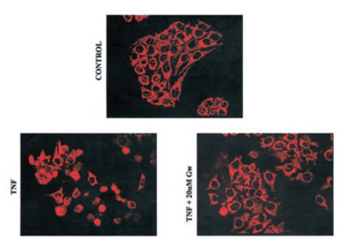
Figure 3 The number of viable cells is decreased when treated with TNF only (bottom left micrograph) as compared to the experimental control (top micrograph). As TNF activated the SMase and activated SMase caused apoptosis. On the other hand, greater number of cells remained alive when treated with both TNF & GW 4869 (bottom right micrograph). GW 4869 treatment prevented apoptosis in these cells as GW 4869 inhibited SMase, which was activated by the action of TNF.
Apart from activating SMase, TNF also promotes the production of ceramide via a separate independent metabolic pathway, i.e., de novo biosynthesis. But this ceramide biosynthesis is not blocked by GW 4869 as enzymes specifically involved in this pathway are not inhibited by GW 4869.
Here, the important thing is that GW 4869 does not directly prevent the apoptosis induced by ceramide alone. But it can inhibit the SMase, which is working upstream of production of ceramide. Thus, apoptosis is inhibited via blocking the production of ceramide.
By inhibiting SMase, all the downstream molecular events also get stopped, i.e., inactivation of Poly (ADP-ribose) polymerase (PARP) via its cleavage, activation of the effector caspases for example, caspase 6 and caspase 9, and release of cytochrome from mitochondria.
In a research study, GW 4869 is found to have a cytotoxic effect on the cells expressing phosphatidylserine (PS) on their external surface. In technical terms, exoplasmic phosphatidylserine (PS). Phosphatidylserine (PS) is anionic phospholipid. In normal cells, phosphatidylserine (PS) is expressed in the internal surface of the cellular plasma membrane. GW 4869 exhibits cytotoxicity in the Multiple myeloma (MM) cell lines as shown in Figure 4. As it can be seen that this cytotoxic effect was maximum and sharp in OPM2 cell line as the graph sharply declined in the leftmost graph in Figure 4. It could also be seen in Figure 4 that U266 cell line showed a resistance to the cytotoxic effect of GW 4869. Very low and statistically insignificant cytotoxic effect has also been seen in all the type of non-multiple myeloma (non-MM) cell lines which were used in that study. This is graphically represented in Figure 5.
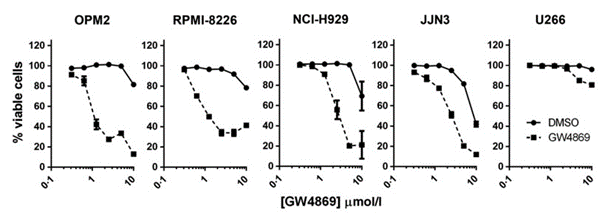
Figure 4 GW48 exhibits cytotoxicity in all the Multiple myeloma (MM) cell lines except in U266 cell line (first graph from the right).
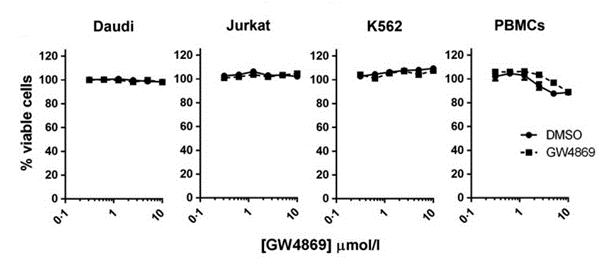
Figure 5 GW4869 does not exhibit cytotoxicity in all of the non multiple myeloma (non-MM) cell lines
In the same research, GW 4869 is also found to cause a growth inhibition of the growth in the Multiple myeloma (MM) cells. Moreover, the survival duration of these mice treated with GW 4869, is also prolonged.
Interestingly enough, the sensitivity and the resistance shown by the Multiple myeloma (MM) cells and non multiple myeloma (non-MM) cells, respectively to GW 4869 is independent of the nSMase2. Even, GW 4869 does not inhibit nSMase2 in the Multiple myeloma (MM) cell lines, as evident from the high levels of Sphingomyelin and Ceramide which are extreme close to the comparative control group in Figure 6.
The shape gets deformed by treating cells with GW 4869 as evident by the localization of GW 4869 at some points of the plasma membrane in Figure 7. Not only that, thereby the fluidity of the plasma membrane is also get compromised.
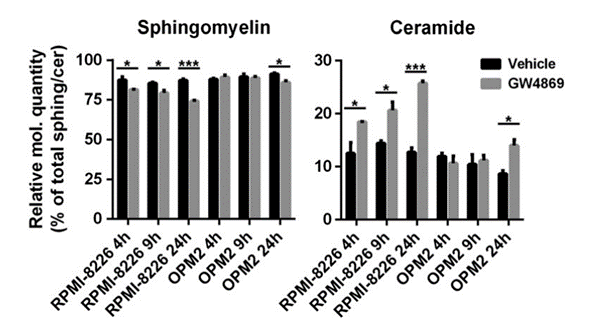
Figure 6 Levels of Sphingomyelin and Ceramide in different GW 4869 treated Multiple myeloma (MM) cell lines.
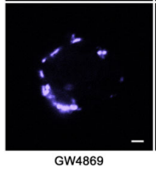
Figure 7 Confocal Microscopic Analysis of GW 4869 treated cells. GW 4869 interacts with the cell surface at specific points only and there it creates deformations in the cell shape
As stated earlier, GW 4869 interacts with the plasma membrane. To further elaborate this point whether it interacts with any specific class of phospholipids, it has been experimentally confirmed that GW 4869 interacts with and bind to the anionic phospholipids, for example, Phosphatidic Acid (PA), Phosphatidylserine (PS), Phosphatidylglycerol (PG); on the other hand, GW 4869 does not interact with the phospholipid species, for example, Phosphatidylinositol (PI), Phosphatidylethanolamine PE, Phosphatidylcholine (PC) and sphingomyelin.
This cytotoxic effect is proposed to be beneficial against those cancers in which proliferating cells start expressing phosphatidylserine on the cell surface. Thus, GW 4869 can be as a novel way to treat those neoplasms/ cancers. Those cancers may be glioblastoma, melanoma, different carcinomas, blood cancer cell lines of myeloid and T cell leukaemia origin; in all of them, exoplasmic phosphatidylserine (PS) is expressed.





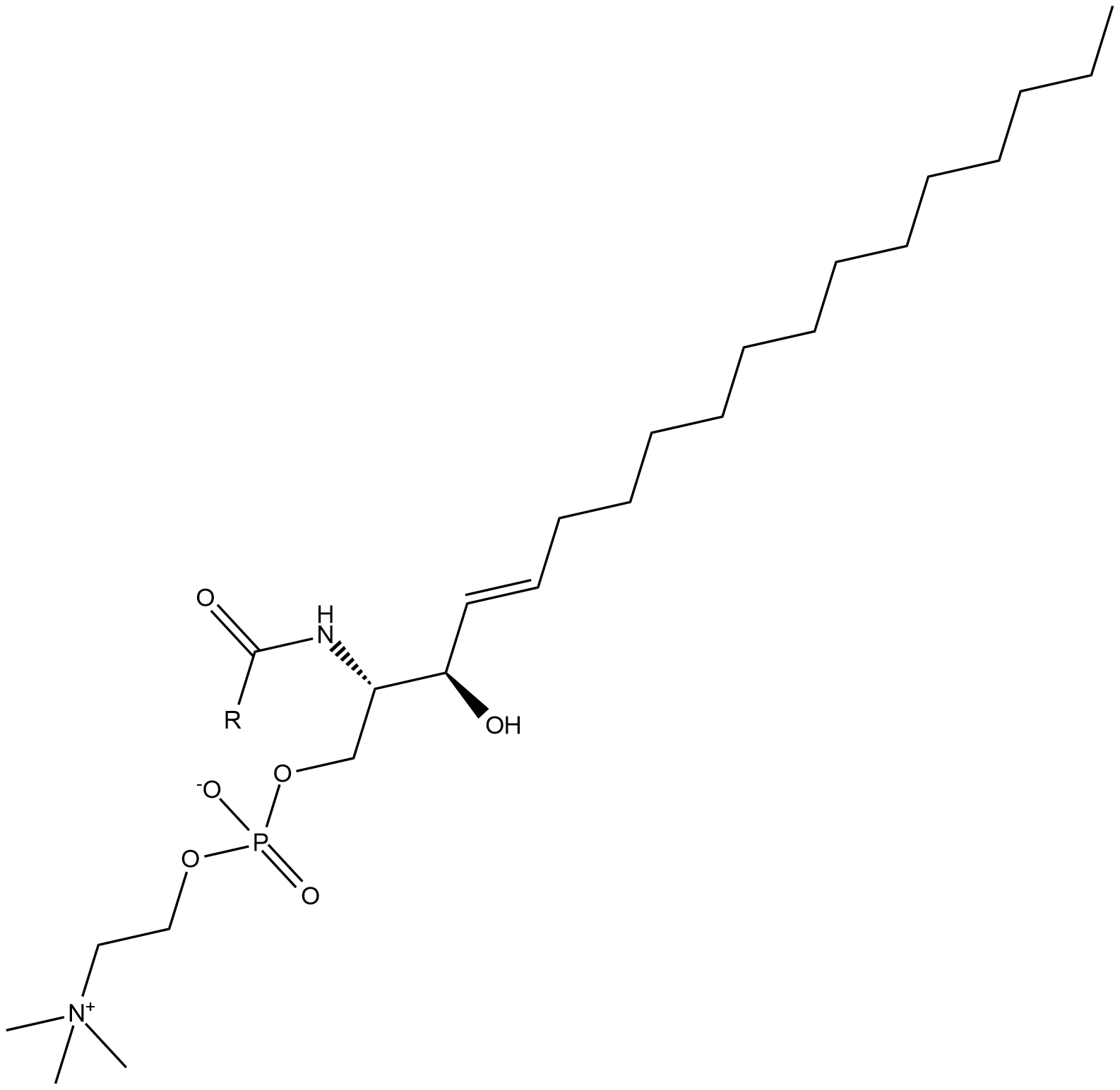
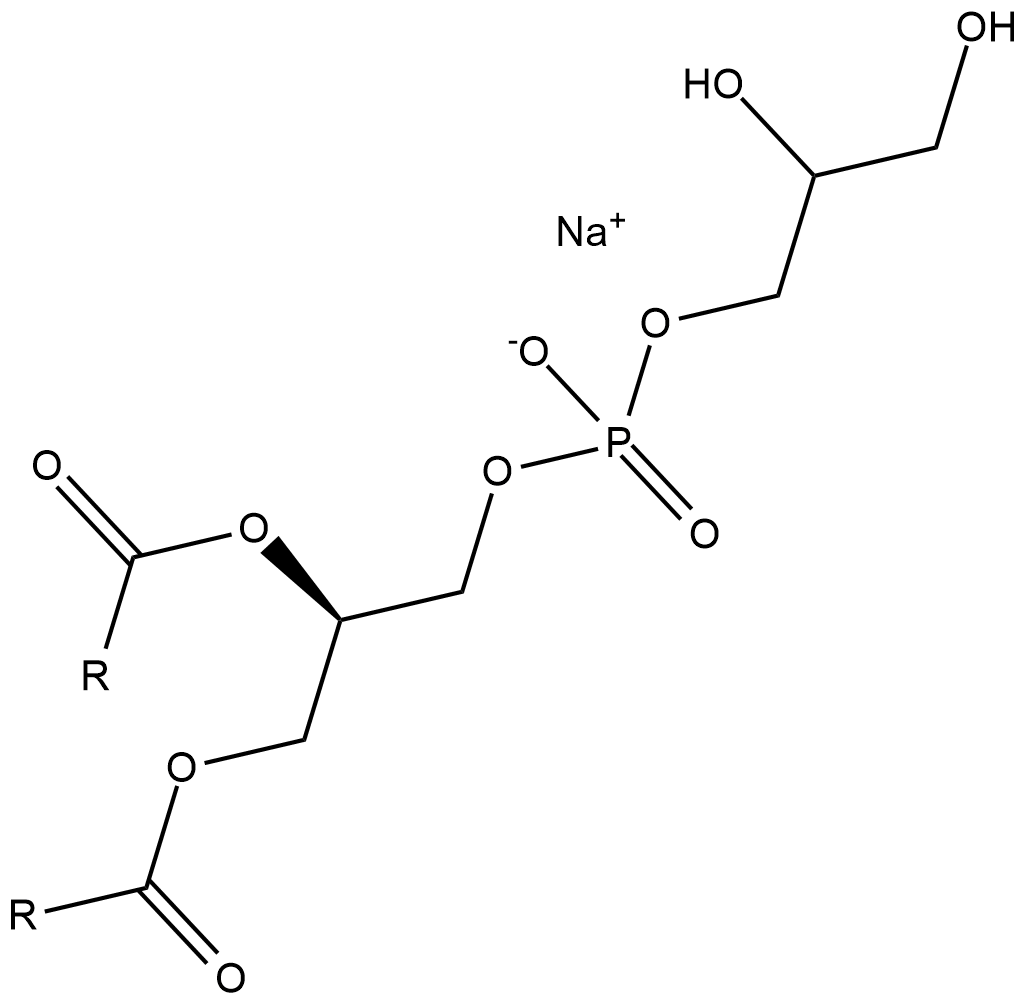
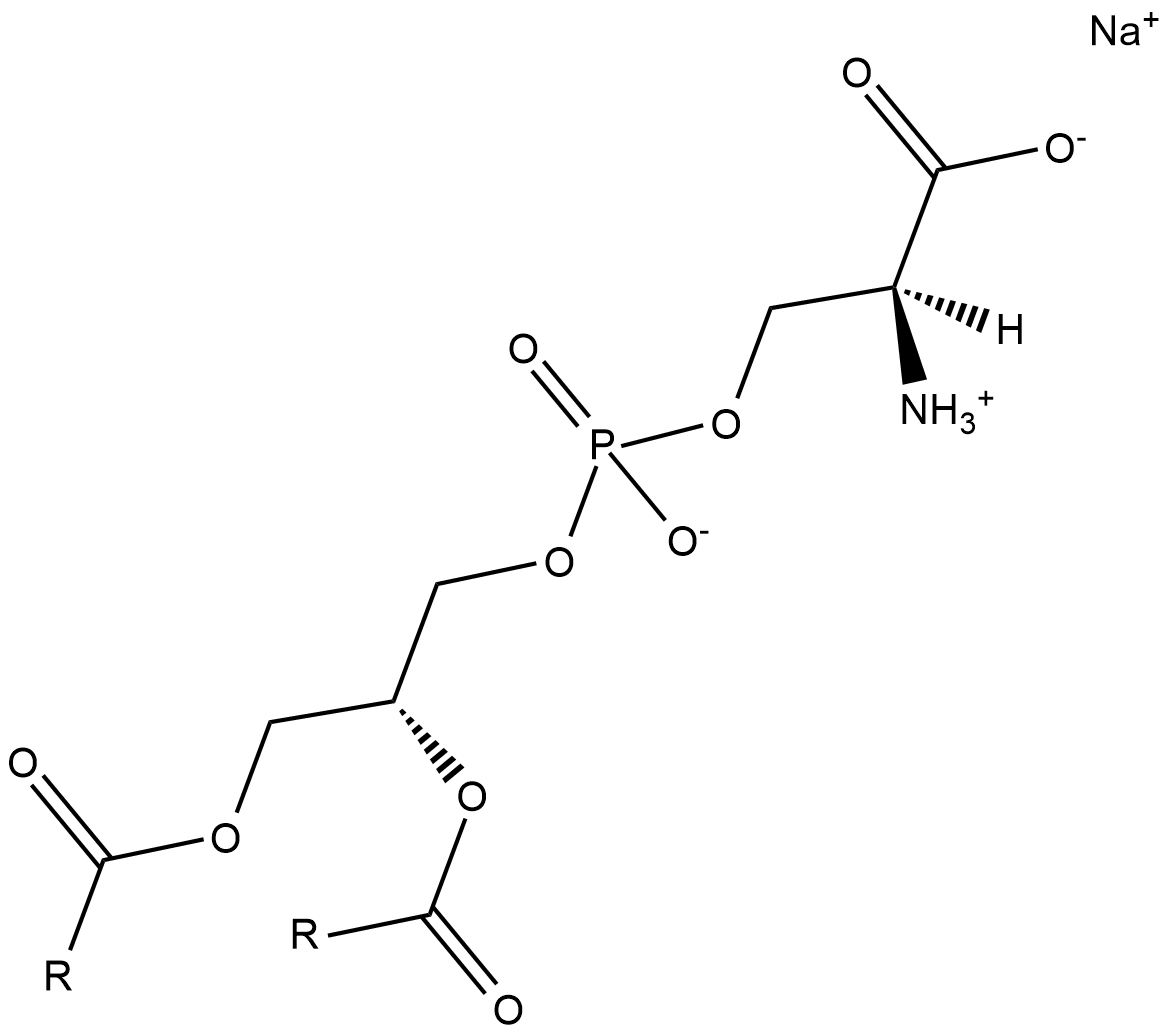
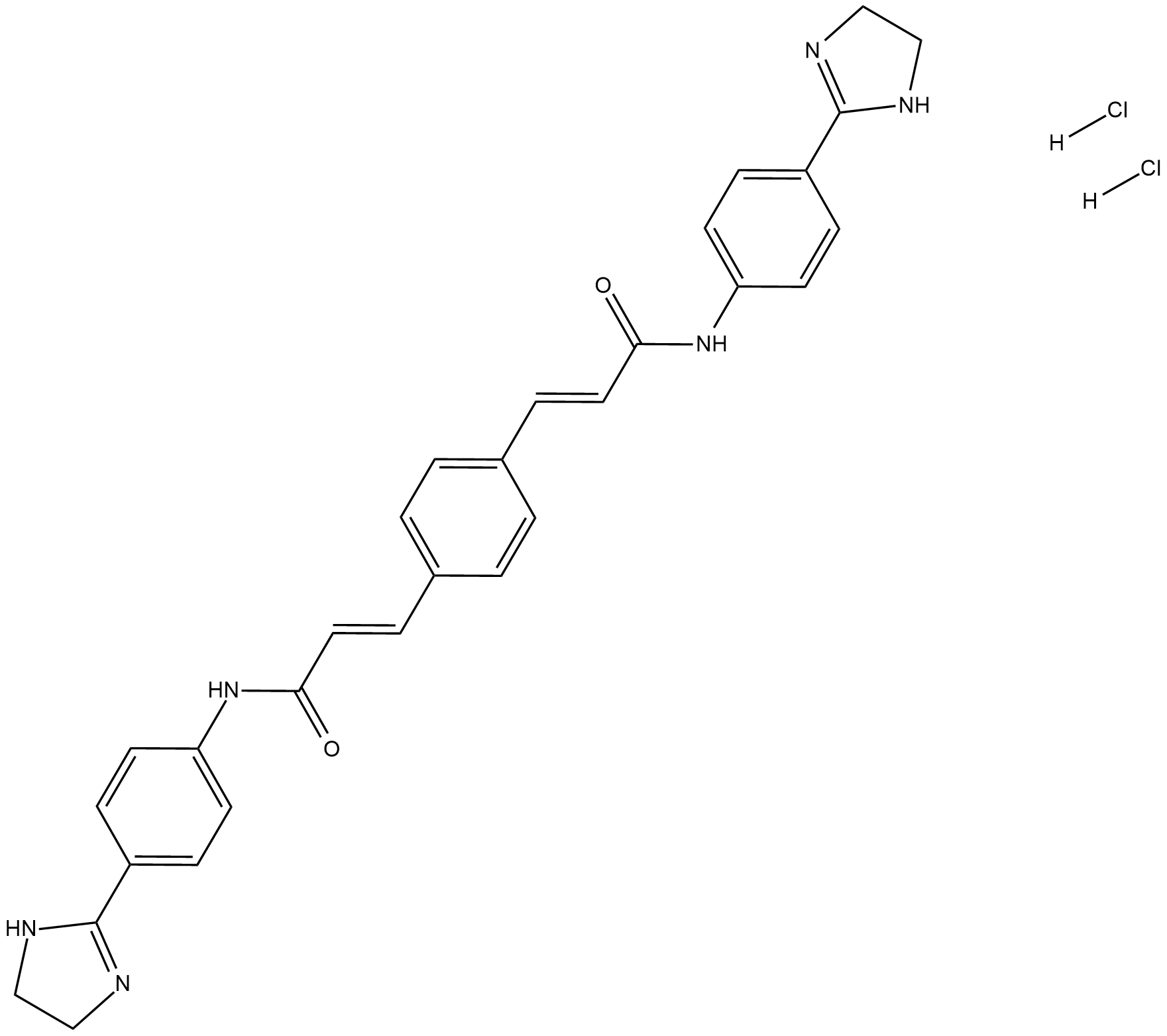


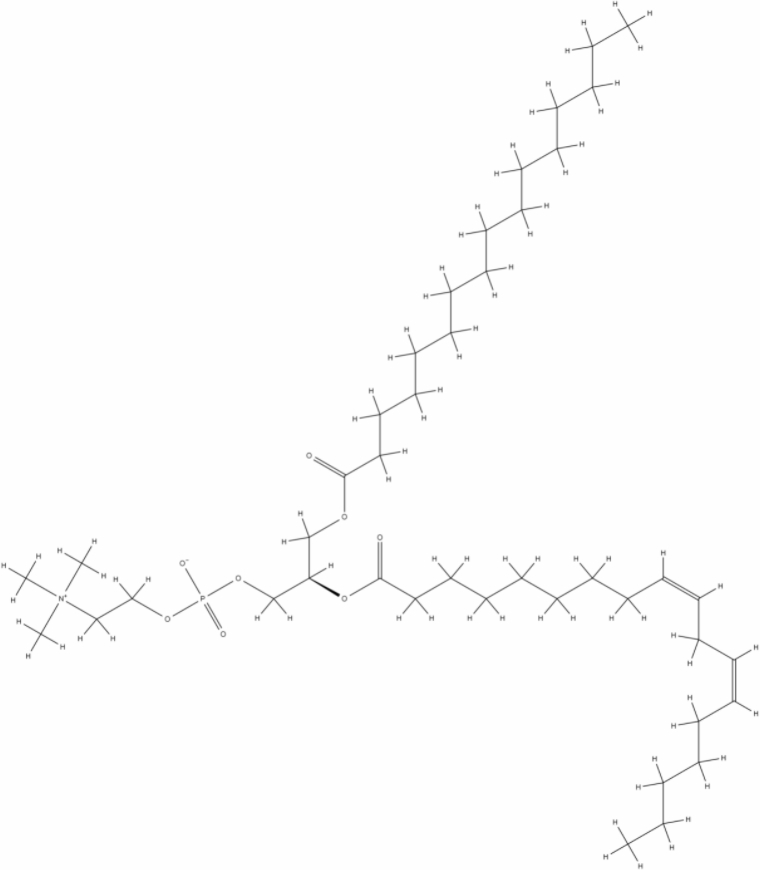









Comments